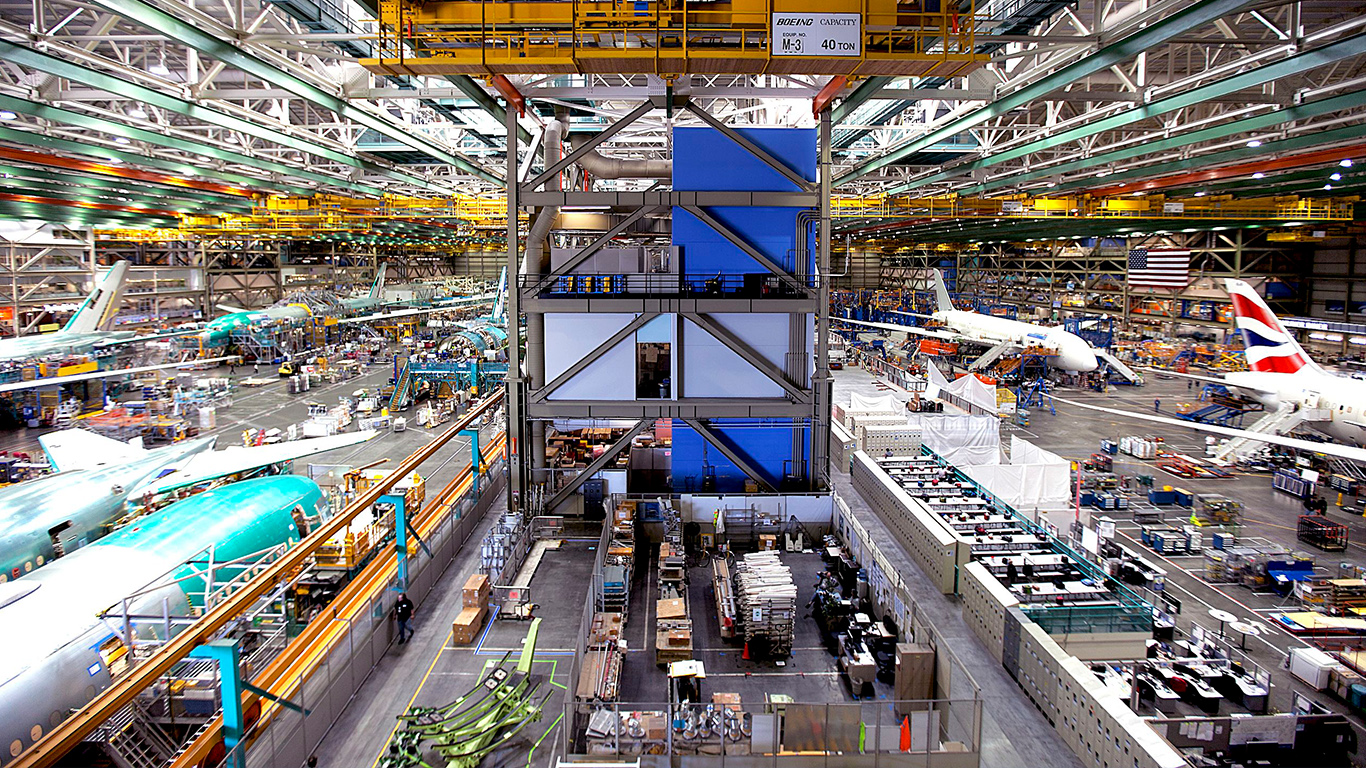Military
Boeing's Investor Day Charm Offensive Doesn't Convince Some Analysts

Published:
Last Updated:

Boeing Co. (NYSE: BA) held its investor day meeting on Wednesday and broke with a years-long tradition of webcasting its management Q&A session. As a result, there was little coverage of the event. Things have changed Thursday morning.
In a tweet yesterday, Scott Hamilton of Leeham News (@LeehamNews), said that analysts told him, “Highly choreographed, limited to those favored.” Why the careful staging? Boeing undoubtedly wanted to downplay its troubles, including its worst headache: the number of 737s that are sitting on the tarmac in Seattle waiting for engines, seats or other parts before the planes can be delivered to customers.
Two of those favored analysts may not get invited back again. Both Canaccord Genuity and JPMorgan analysts have already issued notes on Boeing’s Wednesday presentations.
Canaccord’s Kenneth Herbert noted that Boeing “sees another light” quarter of deliveries for the 737, but the company continues to say that it expects to hit its full-year target with a “strong” fourth quarter. Boeing also claimed that “traveled work” would decline after October. Traveled work is industry-speak for doing work on an airplane that was supposed to have been done earlier and somewhere else. Traveled work is more costly and Boeing has to eat all the costs, thereby reducing margins.
Here’s Herbert’s analysis as reported by Leeham News:
We estimate that there are ~115 737s at Boeing, compared to a more normal level of ~50. [Boeing] currently has ~50 737s parked around its Renton facility, with another ~30 in the facility, each roughly 2x normal levels. We believe there [are] also another ~30 at Boeing Field (flown over from Renton than with engines trucked back to Renton) and a few others at Moses Lake. We put the odds at 50% that [Boeing] will succeed with its recovery plan by the end of 2018, with some suppliers indicating that the delays could spill into 2019. Note that more recently the delays are with other systems … .
JPMorgan analyst Seth Seifman thinks that Boeing early this year underestimated the magnitude of the problem. Fuselage deliveries from Spirit Aerosystems have been slow, although the manufacturer says it is now caught up.
Seifman also noted that engine maker CFM is making progress with delivering engines and that the 737 offers some flexibility related to when the engines are actually attached to the airplane. He thinks the remaining issues revolve around CFM’s casting and forging suppliers, Arconic and Precision Cast Parts (now part of Berkshire Hathaway).
Seifman said Boeing faces two challenges to getting 737 production back on track:
First, suppliers must consistently deliver on time and on quality. Consistency is especially important because the current high rate of 52 aircraft/month leaves little margin for error as delays quickly ripple through the production flow. While Boeing did not quantify exactly when it expects its factory inputs to be running smoothly, our sense is that it is soon. What should take longer is burning down out of sequence work on dozens of aircraft that have come out of the factory unfinished in recent months. Accomplishing this in Q4 to reach the delivery target for the year will not be easy.
Boeing’s stock closed at $346.68 on Wednesday, up about 0.1% for the day. Shares traded at $347.90, up about 0.4%, in Thursday’s premarket session. The stock’s 52-week range is $234.29 to $374.48, and the consensus price target is $410.83.
Retirement planning doesn’t have to feel overwhelming. The key is finding expert guidance—and SmartAsset’s simple quiz makes it easier than ever for you to connect with a vetted financial advisor.
Here’s how it works:
Why wait? Start building the retirement you’ve always dreamed of. Click here to get started today!
Thank you for reading! Have some feedback for us?
Contact the 24/7 Wall St. editorial team.